This is the first installment in our 2023 series examining players who are prime candidates for contract extensions. This series will explore the player’s strengths and weaknesses, and will evaluate what a fair deal between the player and his team might look like (McDaniels will be extension-eligible when the new league year kicks in at midnight ET on Friday night).
Rundown
The 28th overall pick of the 2020 draft after one up-and-down college season at Washington, Jaden McDaniels became a rotation player almost immediately as a rookie for the Timberwolves, appearing in 63 games (27 starts) with averages of 6.8 PPG, 3.7 RPG and 1.0 BPG on .447/.364/.600 shooting in 24.0 MPG.
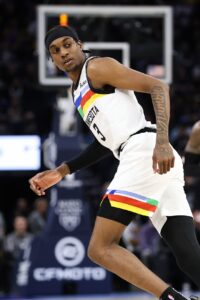 His second NBA season saw signs of progress in some ways, but regression in others. That isn’t meant to be a criticism – it’s simply a reality for most young players.
His second NBA season saw signs of progress in some ways, but regression in others. That isn’t meant to be a criticism – it’s simply a reality for most young players.
For example, his offensive role increased in 2021/22, with McDaniels averaging 9.2 points and 4.2 boards in 70 games (31 starts, 25.8 MPG). He also bolstered his two-point (54.4% to 57.9%) and free throw percentages (60.0% to 80.3%). However, his three-point percentage dropped to 31.7%, which leveled out his efficiency gains in other areas, and his foul rate increased.
Minnesota was bullish on the young forward’s upside, so the team kept him out of the Rudy Gobert trade, reportedly giving up a couple extra first-round picks instead. While that deal certainly was not favorable for the Wolves overall (to put it mildly), retaining McDaniels is at least looking like the correct decision.
Former first round-picks who have both of their team options exercised become eligible for rookie scale extensions in the offseason after their third year, as is the case here. So ‘22/23 was an important season for McDaniels, particularly from a financial perspective.
He responded with a career year, averaging 12.1 PPG, 3.9 RPG, 1.9 APG, 0.9 SPG and 1.0 BPG on .517/.398/.736 shooting in 79 games, all starts (30.6 MPG). He also posted a career-best 58.8% two-point percentage, with a major leap in his scoring efficiency (61.1% True Shooting percentage, vs. 55.2% and 55.3% in his previous two seasons).
Unfortunately, in the last game of the regular season with the Wolves vying for the postseason during the best individual stretch of basketball of his pro career, he punched a curtain that he didn’t realize had a cement wall behind it and broke his right hand. The fact that both McDaniels and Naz Reid (who just signed a three-year, $42MM extension) were injured for the play-in and playoffs right when they were peaking is an overlooked and promising aspect of the Wolves’ offseason, as there is reason to believe they’ll keep improving.
Strengths
At 6’9” with a 6’11” wingspan, McDaniels has elite length for a small forward. He’s a smooth, graceful athlete who is fast in the open court and quick on his feet in tight spaces, which is rare for a player his size.
He uses those tools to navigate screens, contest shots and cover ground on the less glamorous end of the court. McDaniels is one of top perimeter defenders in the NBA, as he received the 12th-most votes of any player for the ‘22/23 All-Defensive Teams, just missing out on the honor (I will never understand why there are two only two All-D teams and three All-NBA teams – more defensive players deserve to be recognized).
Despite having a thin frame, McDaniels is tenacious defensively and plays with an edge on both ends when he’s at his best. He doesn’t shy away from contact, especially if he has momentum.
McDaniels is an extremely versatile defender, with the ability to guard four positions – even five at times. He has strong instincts and is almost always tasked with defending the opposing teams’ best perimeter player. He’s elite on the ball, with excellent lateral footwork and recovering ability. McDaniels’ height allows him to see over the top of screens, and his length allows him to play a few feet off some of the point guards he’s tasked with defending, giving him extra space to maneuver. He’s also a strong weak-side rim protector and reacts well in “help the helper” scenarios.
McDaniels is a versatile offensive player, and a big part of his success in ‘22/23 wasn’t what you’d expect for someone who gets the generic “3-and-D” label – he actually attempted more twos and fewer threes.
I think the Wolves were placing McDaniels in a box a bit early in his career as far as only spotting up for threes at times. He showed throughout last season that he’s more effective – and keeps defenders more off balance – when he’s able to use other parts of his game as well.
Being a plus leaper with plus size makes him a natural lob threat. He has good timing when cutting to the basket, and is a good finisher at the rim. He can pump-fake and drive, handle the ball with both hands, initiate a fast break, run a bit of pick and roll, has a mid-range pull-up jumper, and shot nearly 40% from deep. McDaniels is more skilled than his scoring average might lead you to believe.
Granted, McDaniels’ offensive role was fairly modest for much of last season — he averaged just 8.6 shot attempts per game (55 games) leading up to the trade deadline. That number rose to 10.5 per game (23 healthy games) after the Wolves traded D’Angelo Russell (a score-first guard) for Mike Conley (a pass-first point guard) and Nickeil Alexander-Walker in February.
Another big benefit for McDaniels is that he won’t turn 23 until the end of September, which means there’s theoretically plenty more time for improvement. He was a top-10 recruit entering college, so it’s not a new thing that he’s viewed as having considerable upside.
Weaknesses
While McDaniels is an all-around very strong defender, he’s a subpar rebounder for his position, pulling down just 3.9 boards in 30.6 minutes per game. His other weakness on that end is that he can be foul prone, which can be frustrating when paired with Karl-Anthony Towns’ own undisciplined fouls. That has been an issue in each of his three seasons.
A lack of weight and strength, combined with a high center of gravity, means McDaniels can be bullied off his spots at times. That works against him on both ends of the court, even if his speed and agility help make up for it to an extent. He’s definitely no pushover and doesn’t back down, but if you get into his chest, you can move him.
The 22-year-old’s decision-making can be a little dicey on both ends of the court. He’ll get caught in the air sometimes when going up for a shot, for example, and bites on occasional pump fakes. Cutting down on bad fouls would be a boon for his game. He doesn’t have great feel as a passer.
McDaniels doesn’t always take advantage of mismatches. He’s capable of driving past slower players and shooting over smaller ones, but sometimes he can be passive.
It’s hard to know how legitimate his three-point shooting was in ‘22/23 because his percentages have been all over the place in his career despite fairly consistent attempts. Having a more balanced shot distribution was a positive for his game overall, no doubt, but I’m curious to see if he’ll keep making outside shots at a high level long term.
I could easily see McDaniels becoming a player who scores in the high teens offensively. I’m not sure he can get to 20-plus, though it’s certainly possible if things break the right way. He’s a good ball-handler for his size, but not a great one, and his shot comes and goes.
Conclusion
McDaniels is a young, talented two-way player who brings versatility all over the court. If you were building a wing player from scratch to play defense, he isn’t far off from what you’d be looking for. He has also been pretty durable thus far.
There’s no question that he is highly valued by both the Wolves and all the other 29 teams in the league. He might not be a household name, but he’s going to get a major payday. The question is, how much?
The sample size of McDaniels being a significant contributor to winning is one season. He was very good in that one season, but it’s still only one season. He’s going to get paid based on what he could become just as much as who he currently is. There’s always some risk in that proposition.
McDaniels’ floor in an extension is probably four years, $90MM. That’s what Mikal Bridges got a few years ago and what De’Andre Hunter received before last season started. I thought Hunter got overpaid based on his past results and injury problems, and I would take McDaniels over him in a trade without hesitation.
It’s actually challenging to find a player who compares to McDaniels because he’s only 22, is one of the best perimeter defenders in the league at 6’9”, is a plus athlete, and has an interesting blend of offensive skills. He can’t create his own shot like the former No. 1 overall pick can, but I can see a little bit of Andrew Wiggins in his game. People thought Wiggins was underpaid when he got a four-year, $109MM extension last year.
Something in the middle of those two figures sounds about right to me for McDaniels. If he gets a four-year deal, I think he’s probably in line for around $100MM. The new CBA allows for five-year, non-max rookie scale extensions, and if he wants the extra year of security, I could see him getting about $125MM. $25MM annually is a lot for a role player, but he has a chance to be a special one and was already very good last season.
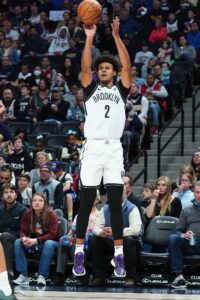
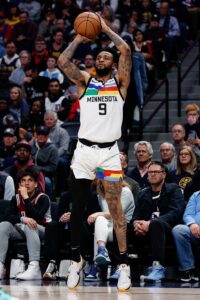
 His second NBA season saw signs of progress in some ways, but regression in others. That isn’t meant to be a criticism – it’s simply a reality for most young players.
His second NBA season saw signs of progress in some ways, but regression in others. That isn’t meant to be a criticism – it’s simply a reality for most young players.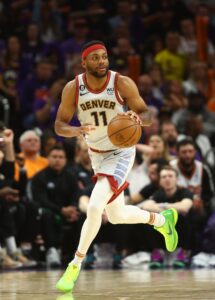 With that foundation in place – and up-and-coming role players like
With that foundation in place – and up-and-coming role players like 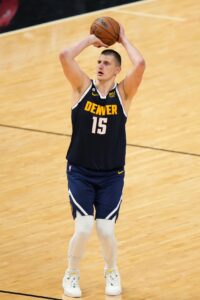
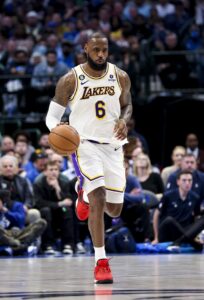 With the Lakers’ season seemingly headed for disaster, speculation ran rampant. Would the team consider trading Davis? Would James – whose new contract extension made him ineligible to be dealt during the season – ask to be moved in the summer? Would the Lakers’ first-round pick, which the Pelicans controlled in a swap, be used to get
With the Lakers’ season seemingly headed for disaster, speculation ran rampant. Would the team consider trading Davis? Would James – whose new contract extension made him ineligible to be dealt during the season – ask to be moved in the summer? Would the Lakers’ first-round pick, which the Pelicans controlled in a swap, be used to get 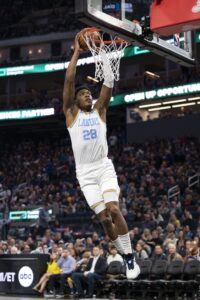 But that still wouldn’t be enough to offer anything close to a maximum-salary contract to a free agent like
But that still wouldn’t be enough to offer anything close to a maximum-salary contract to a free agent like 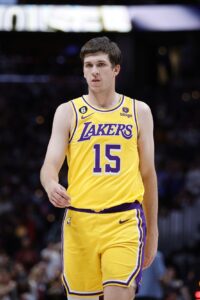
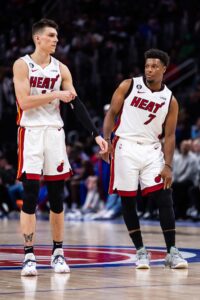 Making the NBA Finals is a very difficult thing to do, and it’s worth acknowledging the accomplishment, even though the Heat were obviously disappointed to fall a little short of their ultimate goal. Despite their success, there could be a significant amount of roster turnover this offseason, in large part due to finances.
Making the NBA Finals is a very difficult thing to do, and it’s worth acknowledging the accomplishment, even though the Heat were obviously disappointed to fall a little short of their ultimate goal. Despite their success, there could be a significant amount of roster turnover this offseason, in large part due to finances.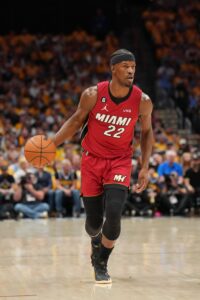 Jimmy Butler
Jimmy Butler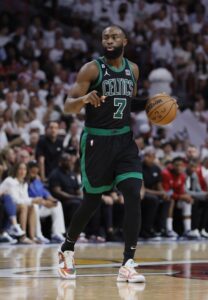 While they obviously fell short of their ultimate goal of winning the title, it’s still impressive that the Celtics have advanced to at least the Conference Finals in five of the past seven seasons. That illustrates how close they’ve been to a breakthrough for several years now while also showing how incredibly difficult it is to win four consecutive playoff series in order to emerge with the Larry O’Brien trophy.
While they obviously fell short of their ultimate goal of winning the title, it’s still impressive that the Celtics have advanced to at least the Conference Finals in five of the past seven seasons. That illustrates how close they’ve been to a breakthrough for several years now while also showing how incredibly difficult it is to win four consecutive playoff series in order to emerge with the Larry O’Brien trophy.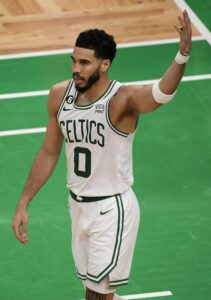 Jayson Tatum
Jayson Tatum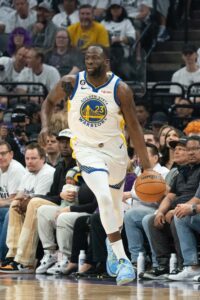 It’s not hyperbole to say that no other team in the league will be more affected by the punitive aspects of the
It’s not hyperbole to say that no other team in the league will be more affected by the punitive aspects of the 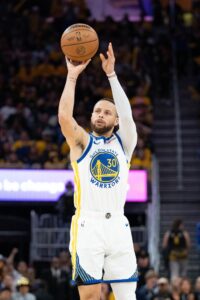 Stephen Curry
Stephen Curry